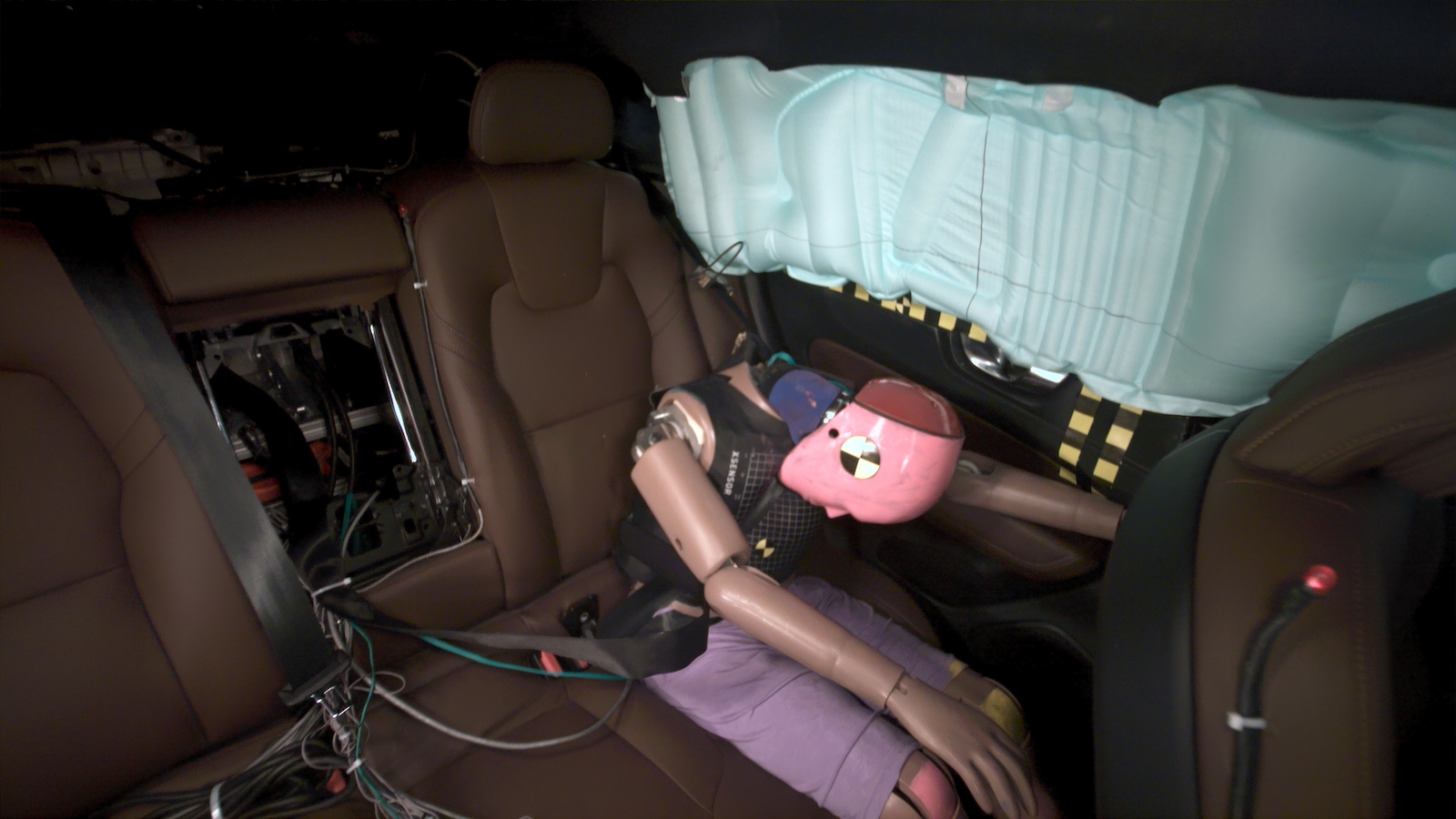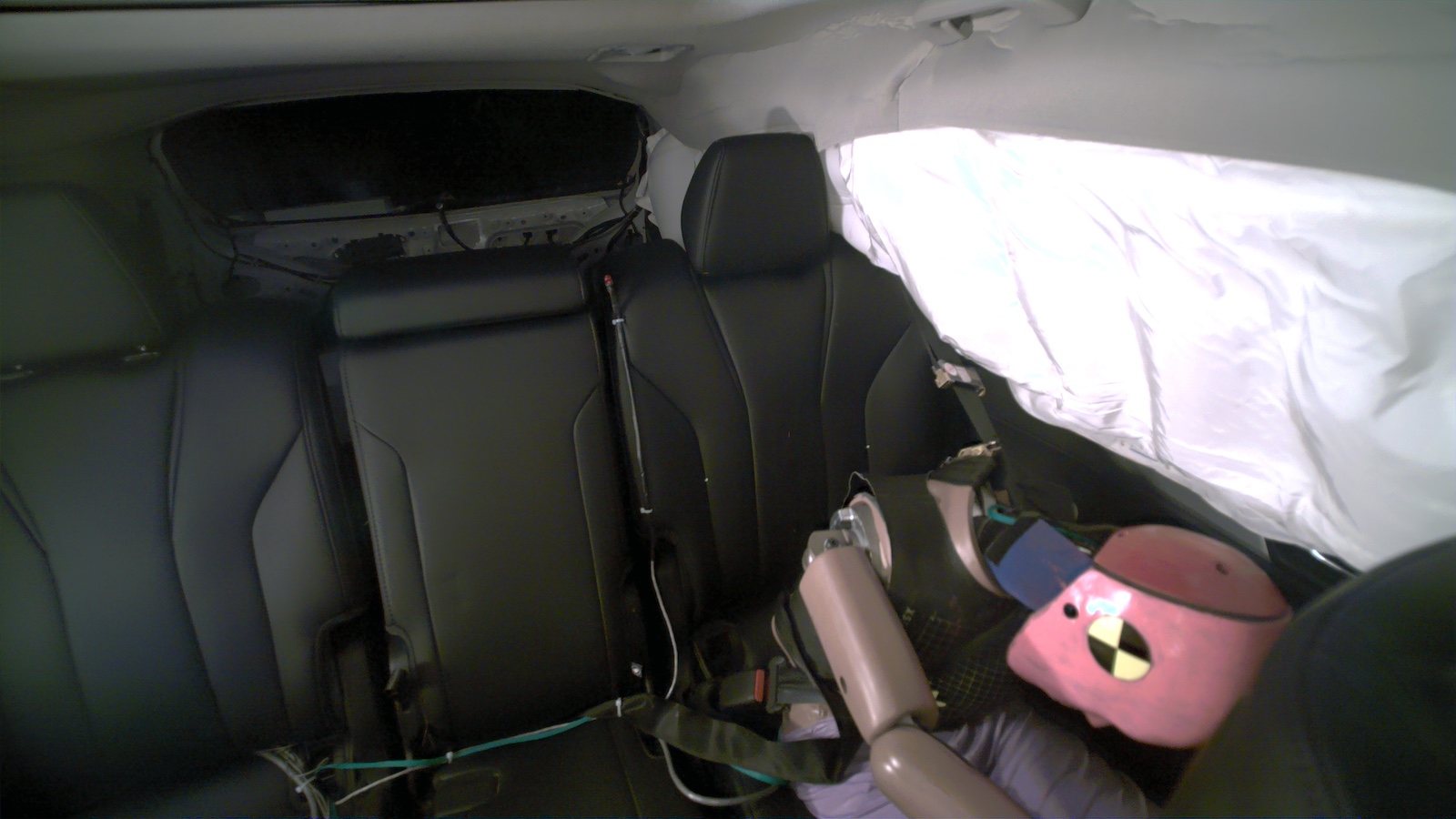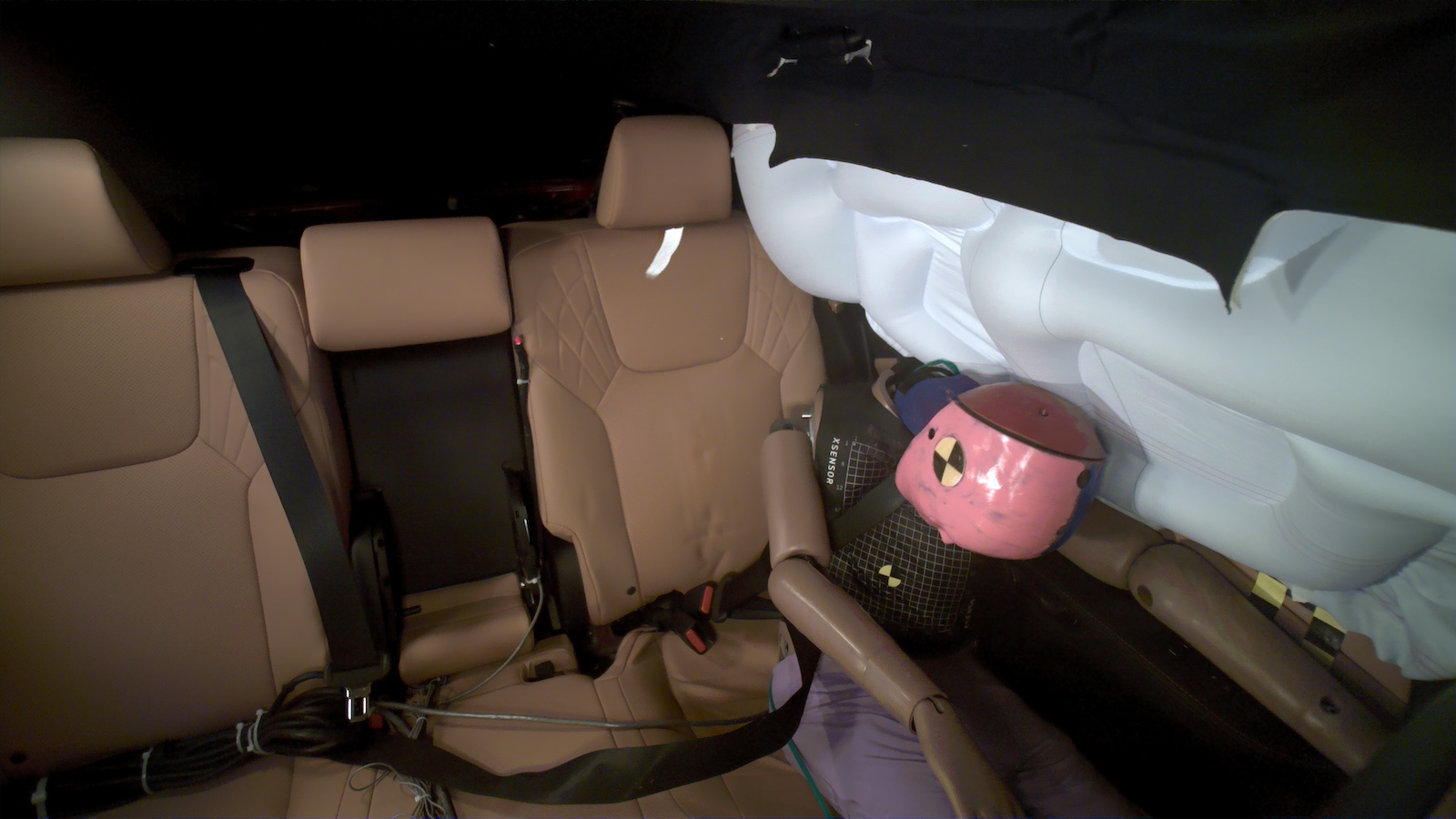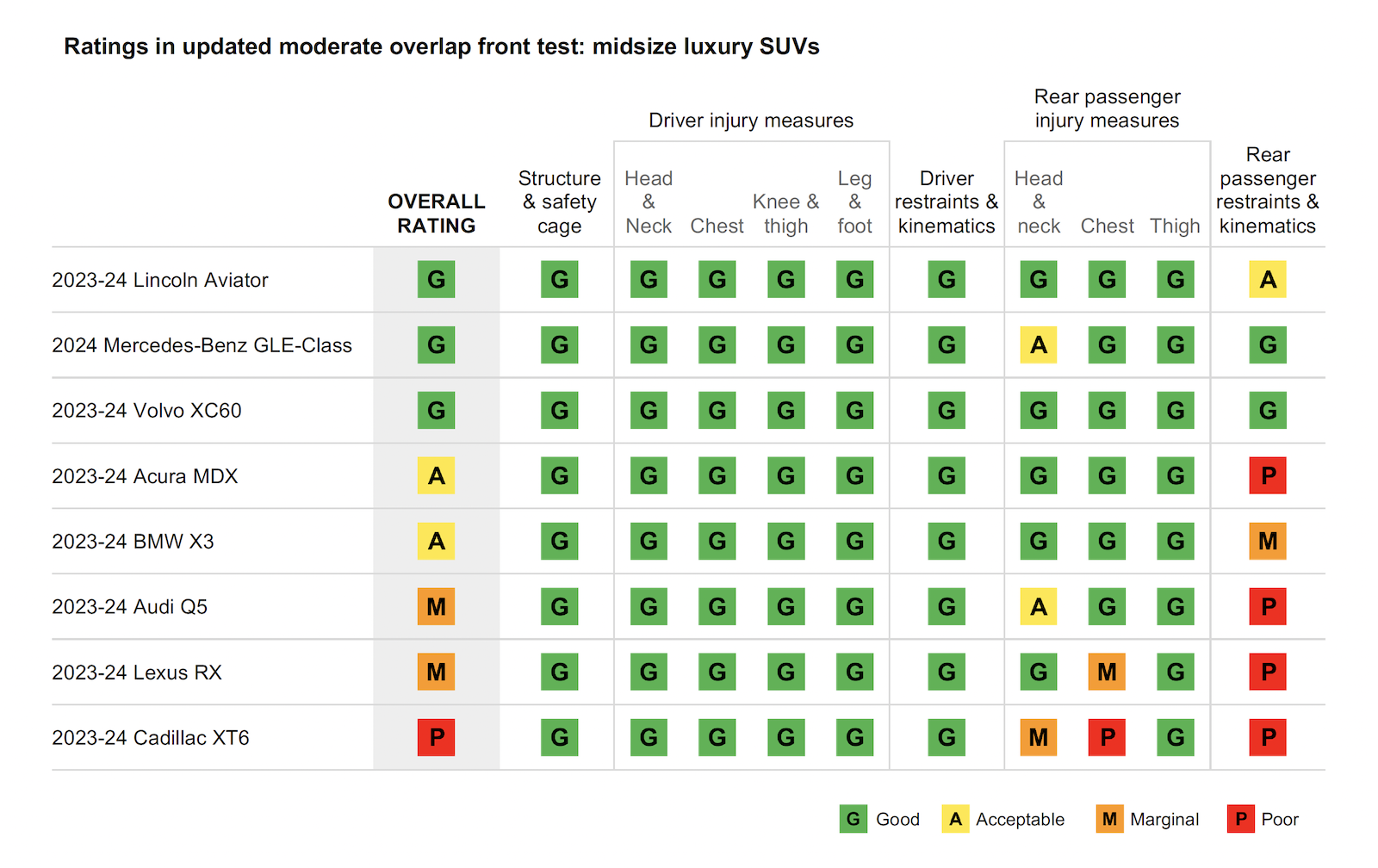Poor performance of rear seat restraints cited as possibly causing injury in most of the tested models.
Paying more for a midsize SUV doesn’t mean you’re safer in a crash – especially in the rear seat. That’s the message from the Insurance Institute for Highway Safety’s updated moderate overlap front crash tests of midsize luxury SUVs. Only the Lincoln Aviator, Mercedes-Benz GLE-Class and Volvo XC60 earned Good ratings. Others fared worse. The Acura MDX and BMW X3 rated Acceptable, while the Audi Q5 and Lexus RX garnered Marginal ratings, and the Cadillac XT6 rated Poor.
“It’s encouraging that more than half of the 2024 midsize luxury SUVs we tested performed well in our updated moderate overlap front crash test,” IIHS President David Harkey said. “The three good ratings in this group show that our new, tougher standards are achievable when manufacturers commit to excellence.”
The revised moderate overlap front test was introduced by IIHS last year after finding that second-row belted occupants in new cars have a higher chance of dying than those in the front. It’s not that the second row isn’t safe. Rather, better seat belts and upgraded airbags—which are rarely seen in the back—have made the front seat safer. The test positions a driver dummy the size of an average adult man in front of a rear-seat dummy the size of a small woman or 12-year-old child.
The Results
The three top-rated vehicles won Good ratings in all categories, except for the Mercedes-Benz GLE-Class, which earned an Acceptable rating for rear-passenger head and neck injuries.
The Acura MDX earned Good marks in all categories except for rear-passenger restraints and kinetics, where it earned a Poor mark. The rear dummy in the Acura MDX submarined under the lap belt, raising the possibility of abdominal injury. The same category earned the BMW X3 a Marginal grade, leading both vehicles to be rated Acceptable. The head of the rear passenger dummy in both the MDX and the BMW X3 came close to striking the front seatback.
The Audi Q5, Lexus RX and Cadillac XT6 also got Poor ratings for rear-passenger restraints and kinetics with submarining being problematic. The Audi Q5 also earned an Acceptable, rather than Good, rating for rear-passenger head and neck injuries. Otherwise, all categories were rated Good.
For the Lexus RX, other categories were rated Good except for rear-passenger chest injuries, which were graded Marginal. The Cadillac XT6 earned a Marginal rating for rear-passenger head and neck injuries and Poor for rear-passenger chest injuries, otherwise earning Good ratings.
“Though several vehicles in this class performed extremely well, the fact that we saw submarining in half the models we tested shows that many manufacturers still have work to do to improve restraint systems in the second row,” Harkey said.













0 Comments